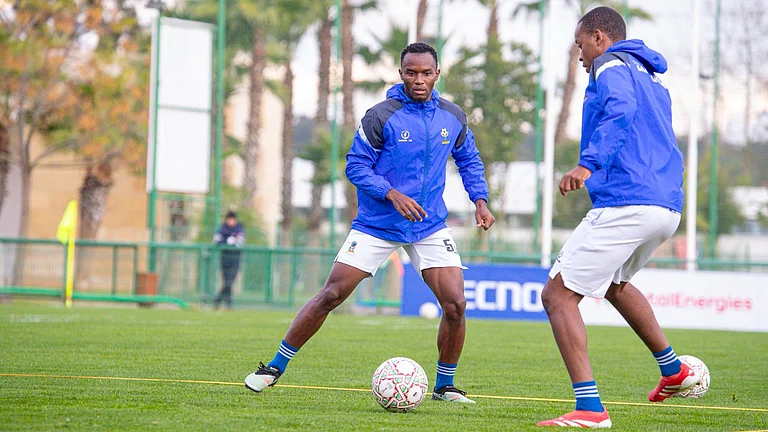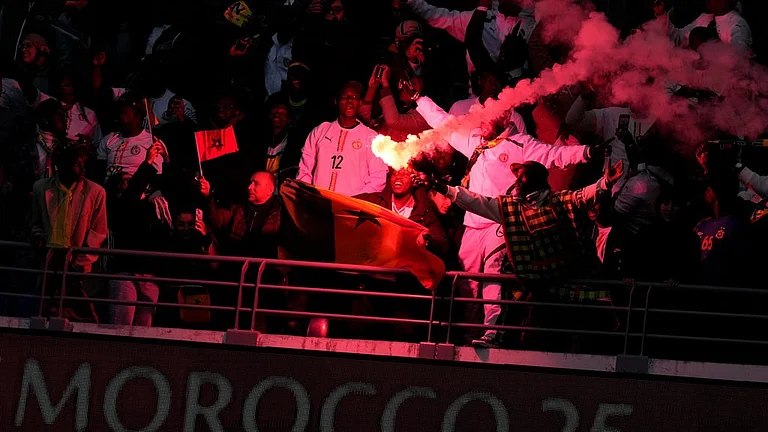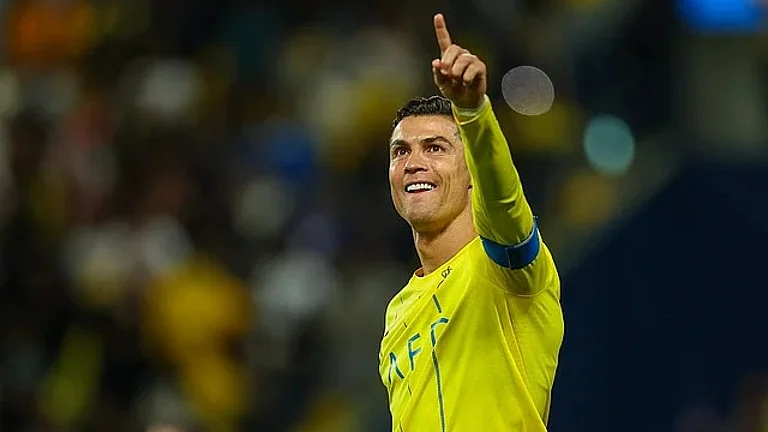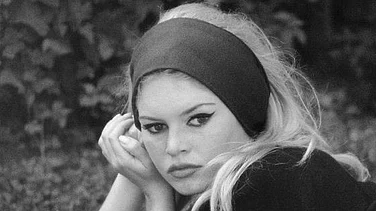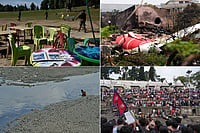Photographer Francesco Malavolta, 47, arrived in Przemyśl, a town in southeast Poland near the country’s border with Ukraine, only 48 hours after the Russian invasion began on February 24 this year. The Italian photographer later recollected that he was struck by the sight of scores of vacant baby strollers abandoned on the platforms of the town’s railway station.
Przemyśl is connected to Kyiv directly by train; the overnight journey usually takes 11 hours. As a result, the town has become the most important transit point for Ukrainian refugees arriving in Poland. But it was not the refugees who had left the strollers.
“Some Polish women had left those strollers there for Ukrainian mothers arriving from across the border with babies,” says Malavolta. “Many of them could not carry their strollers in haste while leaving their country. Many of them even walked for three-four days to cross the border.”
The strollers were one of the first pictures Malavolta took to document the impact of the invasion.
Malavolta has covered refugee crises on Europe’s borders for 15 years. He started in the 1990s, documenting Albanian refugees who had crossed the English Channel. Over the years, his work has focused on the flow of migrants, particularly those using sea routes. “Almost all my works, in recent years, have focused on war refugees fleeing countries at war or deprived of any kind of freedom,” he tells Outlook.
The photojournalist does not believe that one must always be on the battlefield to document the effects of war. He says he is more interested in capturing the ‘human aspect’ of war, expressed through the suffering of people forced to flee from conflict-ridden homes. Since the start of the Russian invasion, Malavolta has been in and out of Poland, Hungary, Slovakia, Romania and Moldova to capture the suffering of Ukranian refugees.
“I try to depict the collateral damage of the war through the stories of refugees,” he says.
In Ukraine, another Italian photographer, Alessio Mamo, has been witnessing the war up close. While Malavolta’s photos depict the war through the eyes of the survivors, Mamo’s photos tell stories of the dead.

“These months of war have been very difficult,” he tells Outlook. “Many had to leave the country. Those who stayed had to live with a nerve-racking war.” He admires the strength of Ukrainians and their resilience in the face of death. “A whole nation had to resist and it is thanks to the resistance of the Ukrainian people that the country is still alive”.
Civilian casualties have been mounting. According to the latest United Nations estimates, more than 6,000 civilians have lost their lives so far in Ukraine. Mamo, who has been photographing war crimes and mass graves, sees no end to it yet. He fears that the conflict might become “low-intensity but last much longer.”
With Russian bombardment seriously damaging Ukrainian power supply, the country is heading into a cold and dark winter. To Mamo, the scenes bring back visions from another great war. “After the Russian attacks on the energy infrastructure, millions of Ukrainians will face a winter without light and heating,” he says. “Much like the winters of World War II.”
Streets of major Ukrainian cities — Lviv, Kyiv and Bucha — depict similar scenes that Mamo’s lenses have captured. “Cold and frost have hit Ukraine,” he says. “Snow on the rubble of buildings bombed by the Russians, long queues for food and water. Winter looms over a resilient people, testing their endurance once again.”
The war does not only test the endurance of victims but also of those like Malavolta and Mamo, who witness it up close. While on the ground, Malavolta is laden with a sense of responsibility. “My work needs to truthfully reflect the extent of the devastation of war,” he says. “It’s important because photographs become part of historical memory. They serve as reminders for humanity to not repeat the same mistakes.”
For photojournalists like Mamo and Malavolta, and countless others, covering wars and insurgency across the globe, this need to document the truth trumps exhaustion and despondency.
“I think that photographs serve as documentary evidence of war,” says Mamo. “The importance of unaligned and independent journalism is precisely to show the world the facts for what they are.”
Author Barbie Zelizer in her 2004 book When War Is Reduced To A Photograph writes that journalistic photos of war are among the most powerful visuals known to humankind. They are “haunted by the stubborn inevitability and proximity of death”, she writes. They are reminders of one of the world’s biggest realities: violence and strife. They provide, as Malavolta puts it, ‘windows’ for the audience to travel to the conflict zone and feel the pain of the victims first-hand.
The documentary aspect of war photography becomes all the more vital in the face of the Russian ‘misinformation’ campaign working tooth and nail to legitimise President Vladimir Putin’s aggression and Russia’s cultural supremacy over Ukraine.
But photos live both in the realm of the past and in the future. They are receipts to hold those in power accountable for the offenses committed in the past.
In India, photojournalist Praveen Jain’s photos of the 1987 Hashimpura massacre were used as documentary evidence to convict and sentence 16 former personnel of the Uttar Pradesh Provincial Armed Constabulary (PAC) for their role in killing 42 men during the Meerut riots, 31 years after the incident.
One of the most prolifically covered and photographed conflicts, the Vietnam War, is also an example of the importance of photography in a warzone. Photographer Nick Ut had recalled in an interview with Time what his brother, Huynh Thanh My, a photojournalist who died covering the Vietnam War, told him: “An image could stop the war and that was his goal.”
Ut’s own controversial photo of the ‘Napalm girl’ is often credited to have played a role in hastening the withdrawal of US troops from the South Asian nation.
Journalistic photographs promote a more realistic assessment of matters that impact the everyday lives of war-stricken people. Such
efforts, however, come at a personal cost. Even when they aren’t filming, the pain and suffering that the photographers’ cameras capture often leak into their consciences.
Malavolta says he cannot swim anymore because every time he looks at the sea now, all he can see are the ghosts of dead bodies bobbing up and down in the waves. “My brain keeps running through the images long after I have put the camera down,” he says. “You can never quite get used to that kind of pain.”
Amid the horror and brokenness, though, there are some days when hope and resilience rally, when humanity fights back. Despite the pain and suffering that Mamo documents on most days, one of the most beautiful stories he recalls concerns Ukrainian artists who decided to stay in the country and resist by “responding to Putin’s missiles with what they had — paintings, comics, and drawings”. Divided by styles and geography, both Mamo and Malavolta dream of a similar future: one where their work is not a reminder of pain but the joys of being alive. “I hope one day to photograph only the beauty of places without suffering,” Malavolta adds.
(This appeared in the print edition as "Photos that should stop a war")







